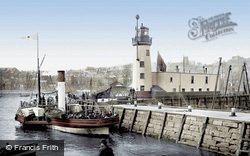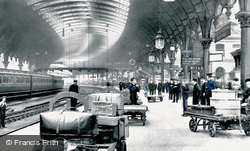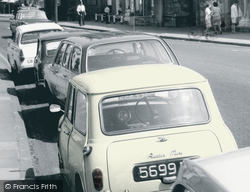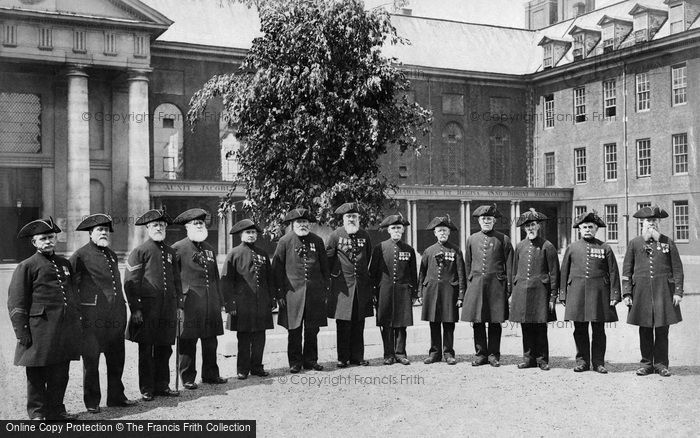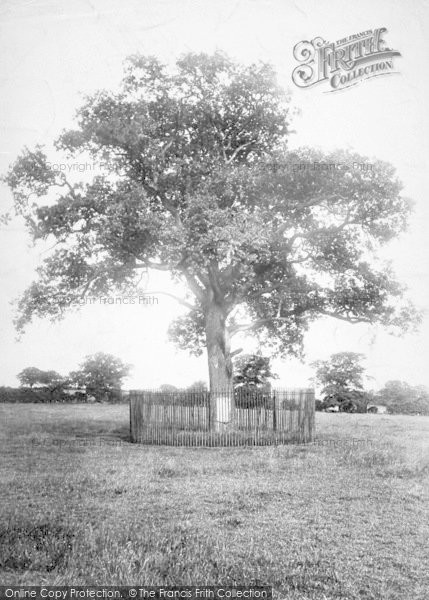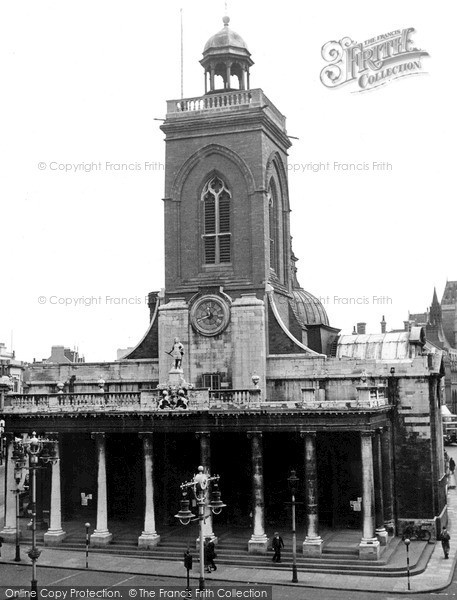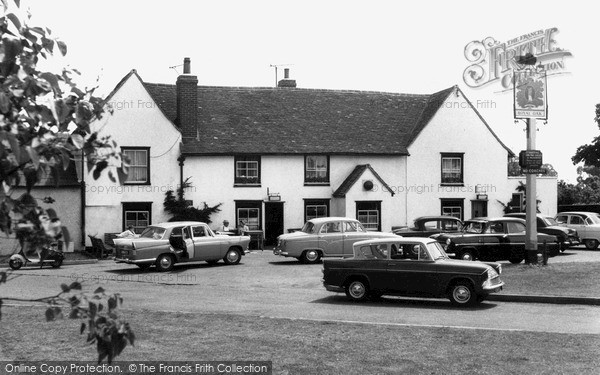Oak Apple Day
Published on
May 29th, 2025
Happy Oak Apple Day! 29th May, known as Oak Apple Day or Royal Oak Day, used to be a public holiday celebrated in England, Wales and Ireland in the past to commemorate the restoration of King Charles II to the throne in 1660 following the Civil War. It was named after the oak tree at Boscobel in Shropshire in which Charles II hid from the Parliamentarian forces pursuing him whilst he was fleeing from the battle of Worcester in 1651, and traditional celebrations to commemorate the event often entailed the wearing of oak apples (a type of plant gall) or sprigs of oak leaves in memory of that famous oak tree. Here we see a group of Chelsea Pensioners at the Royal Hospital Chelsea posing on Oak Apple Day in front of the statue of their founder Charles II decorated with oak leaves in commemoration. The Royal Hospital Chelsea is a retirement home for British soldiers unfit for further duty due to injury or old age. It was founded by King Charles II in 1681, traditionally at the behest of his mistress Nell Gwynn after she met an old wounded soldier reduced to begging for charity.
The oak tree that sheltered Charles II was in Boscobel Wood, which was then part of the park of Boscobel House in Shropshire. Now sited on private land but with public access, the oak tree that stands on the site today is not the original Royal Oak which sheltered Charles II, which is recorded to have been destroyed during the seventeenth and eighteenth centuries by tourists who cut off branches and chunks as souvenirs. The present day tree is believed to be a two or three hundred year-old descendant of the original. In 2000, this tree was badly damaged during a violent storm and lost many branches. In 2010 the tree was found to have developed large and dangerous cracks and is now surrounded by an outer perimeter fence to ensure the safety of visitors.
During the Civil War most of Cornwall was fiercely Royalist. The Cornish village of St Neot still has a tradition of showing its loyalty to the Royalist cause by keeping an oak branch on the top of the tower of its parish church; a new branch is placed there each year on Oak Apple Day.
Another place where a statue of King Charles II is decorated with a branch of oak leaves on Oak Apple Day is Northampton, which suffered a great town fire in 1675. Much of the town’s medieval All Saints’ Church was destroyed, and it was rebuilt in the classical style. The cupola on the tower was added in 1704, and in 1712 a statue of Charles II was set above the church’s portico, in gratitude for the gift of timber from the nearby royal forests that he donated towards the rebuilding of the church after the fire. The statue is garlanded with oak leaves at noon every Oak Apple Day, followed by a celebration of the Holy Communion inside the church.
The Royal Oak pub name also commemorates the famous oak tree where Charles II hid from Cromwell’s troops who were pursuing him after his defeat at the battle of Worcester. When Charles returned to England in 1660 to be restored to the throne, the tale of how he successfully evaded his enemies spread across the country and many pubs were named The Royal Oak in his honour. This is still one of the most popular names for a pub in the UK. Here we see The Royal Oak at South Ockendon in Essex pictured around 1960, where the pub sign features a portrait of King Charles II surrounded by a garland of oak leaves.
This post has the following tags:
Nostalgia.
You may find more posts of interest within those tags.
Join the thousands who receive our regular doses of warming nostalgia!
Have our latest blog posts and archive news delivered directly to your
inbox.
Absolutely free. Unsubscribe anytime.

